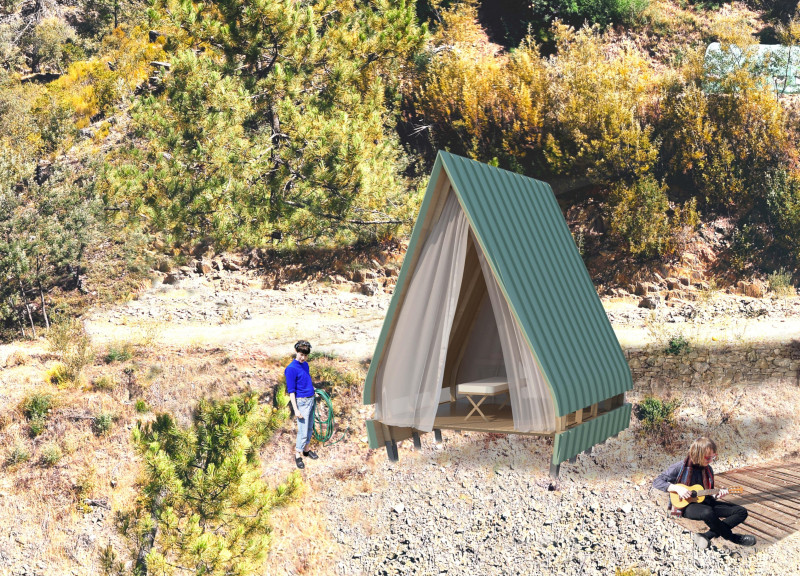5 key facts about this project
At its core, the project functions as a multifaceted space that serves [define specific functions such as residential, commercial, or community purposes], reflecting the contemporary demands of modern living. Accessibility and user comfort are paramount, as spaces are crafted to encourage interaction and engagement among occupants. The design is predicated upon an open floor plan that enhances flexibility, allowing for varied uses of the interior while promoting a sense of community within the structure.
The architectural design incorporates a series of thoughtful elements that contribute to its overall effectiveness. Large operable windows are strategically placed throughout the façade, maximizing natural light while providing unobstructed views of the surrounding landscape. This feature not only creates a connection to the outdoors but also minimizes reliance on artificial lighting, enhancing the sustainability of the project. The use of high-performance glazing further reinforces energy efficiency, regulating indoor temperatures and reducing heating and cooling costs.
The materiality of the project reflects a commitment to sustainability and local craftsmanship. Reinforced concrete and timber cladding have been selected not just for their structural properties but also for their visual appeal. Concrete forms the core framework of the building due to its strength and durability, while timber adds warmth and texture, establishing a welcoming atmosphere. The choice of materials embodies a balance between modern technologies and natural components, reflecting a contemporary aesthetic that respects and enhances its environment.
One of the project’s unique design approaches is its integration of green technologies. The architects have incorporated a green roof system that not only improves insulation but also promotes biodiversity. This innovation fosters an ecological connection by allowing native plant species to thrive, contributing to the overall sustainability of the project. Additionally, energy-efficient systems such as solar panels and rainwater harvesting capabilities are integrated seamlessly into the design, making the project self-sustaining and conscientious of its environmental impact.
The relationship between indoor and outdoor spaces is another pivotal element of the design. Terraces and outdoor areas are not merely extensions of the interior but are thoughtfully designed to encourage outdoor activities and relaxation. These areas function as social hubs, engaging occupants with nature while providing essential spaces for gatherings, leisure, and contemplation. This design choice exemplifies a biophilic approach, acknowledging the innate human connection to nature and the benefits that such environments provide for mental well-being.
In sum, this architectural design project exemplifies a considered approach to modern living, displaying a harmonious blend of practicality, innovation, and environmental stewardship. The careful selection of materials, sustainable technologies, and thoughtful indoor-outdoor connections culminate in a project that addresses contemporary architectural challenges without compromising aesthetic integrity or user experience.
For those interested in gaining a deeper understanding of the project, exploring the architectural plans, architectural sections, and additional architectural designs will provide further insight into the innovative ideas and detailed execution that characterize this remarkable piece of architecture. This project stands as a valuable reference point for future developments and a noteworthy achievement in contemporary architectural design.






















